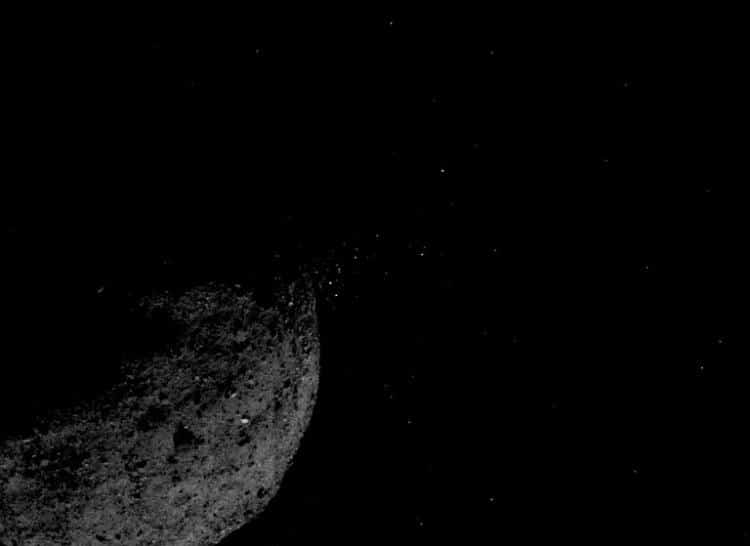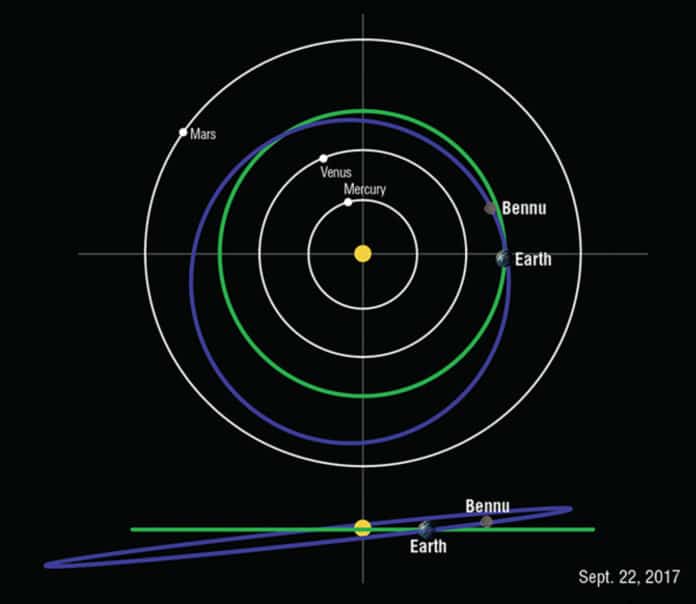OSIRIS-REx rendezvoused with Bennu, an asteroid orbiting the sun over 200 million miles from Earth, in late 2018. Since then, the spacecraft worked by Colorado-based Lockheed Martin has examined the item in more detail than some other asteroid throughout the history of space exploration.
However, one question has remained elusive: What’s Bennu like on the inside?
New findings came out by NASA‘s OSIRIS-REx mission suggest that the interior of the asteroid Bennu could be weaker and less dense than its outer layers—like a crème-filled chocolate egg flying through space. This discovery could potentially offer detailed insights into the evolution of the solar system‘s asteroids—how bodies like Bennu transform over millions of years or more.
Using OSIRIS-REx’s navigational instruments and other tools, the group spent nearly two years mapping out the ebbs and flows of Bennu’s gravity field.
Scientists said, “Think of it like taking an X-ray of a chunk of space debris with an average width about the height of the Empire State Building.”
Andrew French, a coauthor of the new study and a graduate student at CU Boulder, said, “If you can measure the gravity field with enough precision, that places hard constraints on where the mass is located, even if you can’t see it directly.”
Professor Daniel Scheeres from the University of Colorado Boulder’s OSIRIS-REx team said, “What we found may also spell trouble for Bennu. The asteroid’s core appears to be weaker than its exterior, a fact that could put its survival at risk in the not-too-distant future.”

Evolution of asteroids:
Scheeres explained that Bennu belongs to a class of smaller bodies that scientists call “rubble pile” asteroids—which, as their name suggests, resemble loosely held-together mounds of debris.
Asteroids also change over time more than people think.
“None of them have sat out there unchanging since the dawn of the solar system,” Scheeres said. “They’re being changed by things like sunlight affecting how they spin and collisions with other asteroids.”
Scientists studied how Bennu and other similar asteroids may change by took a peek inside. They spotted something unusual: Over and over again, tiny bits of material, some just the size of marbles, seemed to pop off the asteroid and into space. In many cases, those particles circled Bennu before falling back down to the surface.
Members of the mission’s radio science team at JPL were able to witness how the body’s gravity worked first-hand—a bit like the apocryphal story of Isaac Newton inferring the existence of gravity after observing an apple falling on his head.
Squishy center
Combining Bennu’s gravity records at work with data from OSIRIS-REx itself—precise measurements of how the asteroid tugged on the spacecraft over months. They discovered something surprising: a pile of rocks is a pile of rocks.
But the gravity field measurements suggested something different. Certain chunks of Bennu’s interior would likely need to be more tightly packed together than others to explain those patterns. And some of the least dense spots in the asteroid seemed to lie around the distinct bulge at its equator and its very core.
Scheeres said, “It’s as if there is a void at its center, within which you could fit a couple of football fields.”
“The asteroid’s spin may be responsible for that void. Scientists know that the asteroid is spinning faster and faster over time. That building momentum could, Scheeres said, be slowly pushing material away from the asteroid’s center and toward its surface. Bennu, in other words, maybe in the process of spinning itself into pieces.”
“If its core has a low density, it’s going to be easier to pull the entire asteroid apart.”
This discovery is quite bittersweet. However, it as contributed to the mission’s sample analysis plan—currently in development. The returned sample will be analyzed to determine the cohesion between grains—a critical physical property that affects the mass distribution observed in their study.
Journal Reference:
- D. J. Scheeres et al. Heterogeneous mass distribution of the rubble-pile asteroid (101955) Bennu. DOI: 10.1126/sciadv.abc3350
